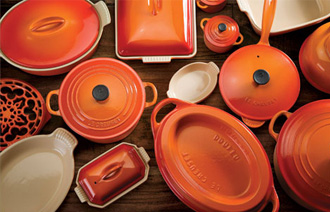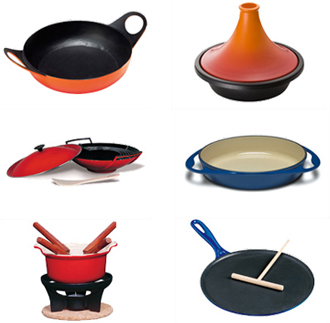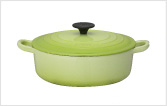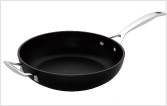  |
In the early 1990s was to see the set up of various subsidiaries worldwide: in Hong Kong (1998), Switzerland, South Africa, Brazil and Spain (1999), Scandinavia (2003), Italy and Canada (2004). Le Creuset modernised its factory with the installation of a new electric furnace in 1999 and a new moulding chain increasing the foundry capacity in 2003. The brand was also diversified with the introduction of enamel on steel kettles in 1995, silicone spatulas in 1997, a textile range in 1999, stoneware bakeware in 2001, silicone bakeware and stainless steel cookware in 2002 and most recently Toughened Non-Stick frying pans in 2008. In 1995 we began expansion into new categories: stainless steel, stoneware, silicone, enamel on steel, textiles and forged hard-anodized aluminum. And while Le Creuset pieces are associated with the finest French style and cuisine, we have worked to build an international presence by embracing local cooking trends with pieces such as the cast iron wok, an Indian karahi dish, a Japanese sukiyaki pan, an Italian risotto pot and a Moroccan tagine. Although some production processes have been modernized, you can be sure that the handmade qualities of Le Creuset cookware remain unchanged. We still manufacture our cast iron in the original foundry, with each piece passing through the hands of 15 skilled artisans. |
| History | |
| 1991 | Acquired Hallen International Inc who made wine accessories under the Screwpull trademark. |
| 1992 | Launched its first wok inspired by the growing trend in Asian cooking and the new Saffron colour |
| 1998 | Established branch office in Hong Kong |
| 2002 | Released Japanese Cocotte |
 |
 |
| "Cocotte-sukiyaki" pot from Japan was released in 2002 | New TNS (Toughened Non-Stick) Frying pan was released |
THE EARLY YEARS (1925 - 1957)
THE EXPANSION YEARS (1958 - 1991)
